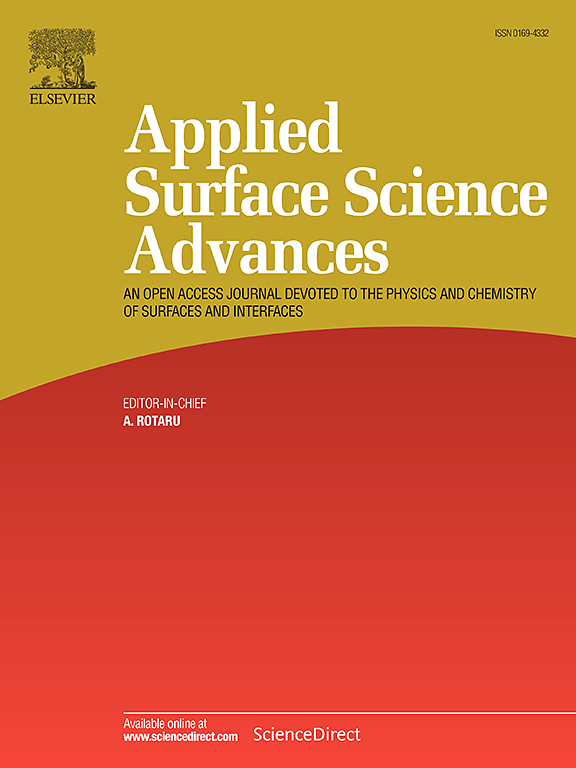Adhesion-induced MoS2 layer transfer via in-situ TEM-nanoindentation: Effects of curvature and substrate mediated residual stress
IF 7.5
Q1 CHEMISTRY, PHYSICAL
引用次数: 0
Abstract
Molybdenum disulfide (MoS2) holds great potential in a wide range of applications, including electronics, photodetectors, light-emitting diodes (LEDs), and solar cells due to its unique two-dimensional (2D) structure. This structure enables innovative functionalities, particularly in flexible and wearable technologies. However, a significant knowledge gap remains regarding MoS2's interfacial adhesion, a critical aspect for advancing next-generation devices. To address this, we conducted a comprehensive study investigating the interaction forces originating from the bonding between atoms that govern the adhesion of ultra-thin 2D MoS2. Our pioneering in situ experiments, utilizing TEM-based nanoindentation, provided precise imaging and force monitoring of MoS2's interaction with a diamond. We employed four MoS2-coated AFM tips with varying radii and preparation methods, with films prepared on two Si wafers subjected to different oxidation protocols. Our findings, validated by Raman and X-ray photoelectron spectroscopy, reveal unique insights into MoS2's interfacial behavior. We observed a decreased structural order in MoS2 on sharper tips, particularly those without pre-deposition oxidation. These results underscore the importance of residual stress between the MoS2 film and substrate and the influence of curvature-induced residual stress in fostering less-ordered MoS2 structures with heightened work of adhesion. Importantly, this is the first study to report the work of adhesion for MoS2-diamond contact. Our findings highlight the crucial role of covalent bonding at contact points in the material transfer processes involving 2D materials. This is a critical insight for developing precise and reliable methods for manipulating 2D materials, which could significantly advance our understanding and application of materials science, particularly in nanotechnology and device fabrication.

二硫化钼(MoS2)因其独特的二维(2D)结构,在电子、光电探测器、发光二极管(LED)和太阳能电池等广泛领域具有巨大的应用潜力。这种结构可实现创新功能,尤其是在柔性和可穿戴技术方面。然而,MoS2 的界面附着力仍是一个重大的知识空白,而这正是推动下一代设备发展的一个关键方面。为了解决这个问题,我们开展了一项全面的研究,调查原子之间的键合作用力对超薄二维 MoS2 粘附性的影响。我们利用基于 TEM 的纳米压痕技术进行了开创性的原位实验,对 MoS2 与金刚石的相互作用进行了精确成像和力监测。我们采用了四种不同半径和制备方法的 MoS2 涂层原子力显微镜针尖,在两个硅晶片上制备的薄膜采用了不同的氧化方案。我们的研究结果得到了拉曼光谱和 X 射线光电子能谱的验证,揭示了 MoS2 界面行为的独特见解。我们观察到,在更尖锐的尖端,特别是那些没有经过沉积前氧化的尖端上,MoS2 的结构阶次降低了。这些结果凸显了 MoS2 薄膜和基底之间残余应力的重要性,以及曲率引起的残余应力在促进具有更高附着力的低有序 MoS2 结构方面的影响。重要的是,这是首次报告 MoS2 与金刚石接触的附着功的研究。我们的研究结果凸显了接触点上的共价键在涉及二维材料的材料转移过程中的关键作用。这对于开发精确、可靠的二维材料操作方法至关重要,可以极大地促进我们对材料科学的理解和应用,尤其是在纳米技术和设备制造方面。
本文章由计算机程序翻译,如有差异,请以英文原文为准。
求助全文
约1分钟内获得全文
求助全文

 求助内容:
求助内容: 应助结果提醒方式:
应助结果提醒方式:


